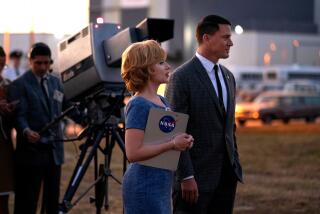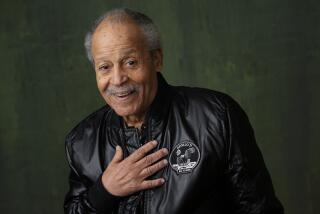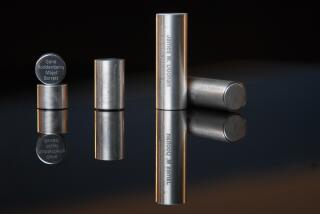Shouldnât heroes last forever?
In late February, the House cast a 394-0 vote to rename NASAâs cutting-edge flight research center in Southern California after the late astronaut Neil Armstrong. What could possibly be wrong with that?
In their advocacy, the billâs sponsors pointed out that Armstrong spent seven years at the desert center as a test pilot. Before the U.S. had a spaceship, Armstrong flew the next closest thing, the X-15 rocket plane, from there. That led to his joining the astronaut corps in 1962 and becoming the first person to set foot on the moon in 1969. His life will always be linked to the hallowed ground of the Mojaveâs lake beds where gutsy fliers infused with the âright stuffâ still aim skyward to push the proverbial envelope ever farther, faster and higher.
As well-intentioned as it is to recognize our most iconic space traveler, the measure that awaits the Senateâs approval would strip the name of the prior honoree, Hugh L. Dryden, from the center where it has graced the entrance for 37 years. Dryden died in 1965 after a long and distinguished career advancing aerospace at NASA, its precursor, the National Advisory Committee for Aeronautics, or NACA, and other government agencies. As he put it, âThe airplane and I grew up together.â
Dryden was a math and science prodigy. At 14, he entered Johns Hopkins University and graduated with honors in three years, and later earned graduate degrees. The head of the universityâs physics department referred to Dryden as âthe brightest young man ⦠without exception.â
As a researcher, he contributed to the development of the laminar-flow wing, which helped to make the P-51 Mustang the premier fighter of World War II. He also oversaw development of the initial U.S. guided missiles used in the conflict.
After the war, Dryden fostered a golden age of aeronautical breakthroughs at NACAâs fledgling desert facility, exemplified by the trailblazing flights of the X-15. In 1957, the U.S. was jolted by the Soviet Unionâs launch of Sputnik. Soon afterward, NACA morphed into NASA, and Dryden became the new agencyâs No. 2 official.
Dryden encouraged President Kennedy to set the nationâs sights on a manned lunar mission. In 1961, the year the decision to go to the moon was made, Dryden wrote: âThe discipline of cooperation in a great national effort may well be the instrument of great social gain.â
As a kind of consolation prize, the pending legislation relegates Drydenâs name to the Western Aeronautical Test Range, the airspace that overlies 12,000 square miles of Mojave terrain. But based on experience with a similar game of name-related musical chairs at NASAâs facility in Cleveland, this stepped-down recognition is likely to fade into vacuity.
In 1999, the Lewis Research Center was renamed the Glenn Research Center at Lewis Field. With the passage of time, the lessened reference to Lewis simply evaporated. Lewis was George W. Lewis, an eminent engineer who had handed off the leadership of NACA to Dryden. Of course, Glenn is former Ohio Sen. John Glenn, the first American to orbit the planet.
The danger in this shuffling of honors is that the honors will be diluted with each upstaging by the celebrity du jour. The names of Armstrong and Glenn could eventually suffer the same short shrift as Dryden and Lewis, when future explorers arguably eclipse their feats. In honoring new heroes, why must Congress downgrade and displace past heroes?
An irony here is that Armstrong eschewed the limelight. His ethos was manifested by his admirable refusal to capitalize on his exalted status. In his NASA oral history, his humility shined when he acknowledged the extraordinary exertion of his teammates: â[T]hatâs the only reason we could have pulled this whole thing off....â It makes one wonder whether Armstrong would have wanted his name to bump the name of one of those teammates.
There is a veritable universe full of other material things that can be named after the first moon walker. There is the launch pad for the next heavy-lift booster. Or the booster rocket itself. The Armstrong 1969 has a stirring ring as a successor to the Saturn V. Perhaps the most fitting tribute, however, would be to finally resume the journey to the stars that Armstrong brilliantly represented and passionately advocated.
Philip Handleman is the author of 22 books on aviation.
More to Read
A cure for the common opinion
Get thought-provoking perspectives with our weekly newsletter.
You may occasionally receive promotional content from the Los Angeles Times.










